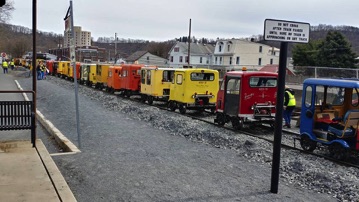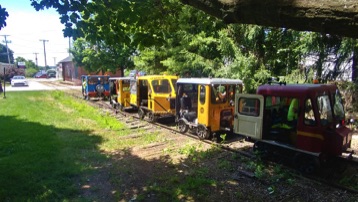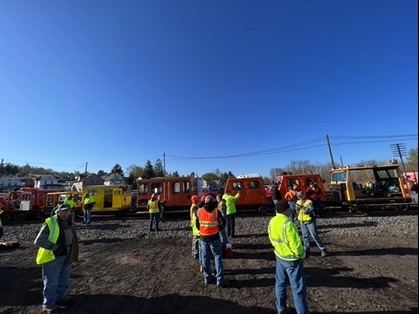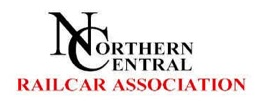The roots of the Northern Central Railway go back to 1828 almost one year after the Baltimore & Ohio's incorporation. In that year, a charter was granted by the Maryland Legislature to build a railroad from Baltimore to York Haven, Pennsylvania, passing through York County en route. The line was known as the Baltimore & Susquehanna Railroad (B&S). At first, the Pennsylvania Legislature balked because they felt the railroad would help Baltimore tap the entire Susquehanna River Region. Finally, in 1829, a compromise was reached allowing majority financial participation by Pennsylvania interests.
In 1832, the Pennsylvania Legislature approved the incorporation of the York & Maryland Line Railroad Co. (Y&ML) The line eventually reached York, PA in 1838 after completion of the "Howard Tunnel". This tunnel is reported to be the "oldest railroad tunnel in continuous service". The B&S eventually acquired the Y&ML and, rather than build to York Haven, the original goal, they formed the Wrightsville, York & Gettysburg Railroad (WY&G). This line linked the Baltimore interests with the more strategic towns of Wrightsville and Columbia, PA.
The B&S controlled and operated the line between Baltimore and Wrightsville, much to Pennsylvania's disdain. Other connections were built and, by 1854, the B&S was planned to Sunbury, PA and beyond.
In January 1855, after a disastrous train wreck the year before, all of the B&S controlled lines (except the WY&G) were taken over by a new consolidated company - the Northern Central Railway (NCR). The line prospered, although with heavy financial burden. It was necessary to rebuild and double track the line even through the Civil War. In 1868, the Howard Tunnel was rebuilt and a second track added.
By the turn of the century, the NCR was a well established world class railroad. However, many events, including government regulation, again tightened the Railway's finances. Finally, in 1914, the NCR was leased to the Pennsylvania Railroad (PRR) for 999 years
The NCR's basic system was still intact in the late 1960's. The 1968 merger of the PRR with the New York Central (NYC), however, made some of the NCR's lines redundant. Finally, on 21 June 1970, the new Penn Central Railroad (PC) collapsed into bankruptcy. The Baltimore to York section of the NC was one of the lines that suffered from deferred maintenance. The last scheduled passenger train ran on the eve of the birth of Amtrak.
The final blow came when Hurricane Agnes visited York County on 23 June 1972. Major bridges along the Codorus Creek were totally destroyed. Trackbed was severely damaged at many locations. The PC quickly petitioned to abandon the railroad below York. The Pennsylvania Department of Transportation purchased the York to New Freedom section in June 1973. Without support from Maryland, the Cockeysville, MD to New Freedom, PA portion was gone forever.
The line lay dormant for over twelve years. In that time, though, the non-profit Southern York County Corporation was formed to rebuild the railroad. On 14 January 1985, the Stewartstown Railroad, the designated operator, brought in the first revenue load of lumber. Other than at New Freedom, however, little rail oriented industry remained.
Today, Yorkrail serves industries to Hydes Station, just south of York. Now, other than the ribbons of rails, few remnants of the NC's 19th Century glory remain.
History


Centennial History of the Pennsylvania Railroad by Burgess & Kennedy.
The Story of the Northern Central Railway by Robert L. Gunnarsson, Greenburg Publishing Co., Inc.

